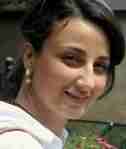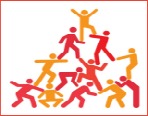Cooperating for an improved Afghanistan
Preparing and researching for my April, 2012 embed with the Minnesota National Guard’s Agribusiness Development Team – Zabul (ZADT) has introduced me to people and organizations I would have otherwise never met. It’s my hope that through my blog I am able to share knowledge with you.
Most of what I share in this blog, information-wise, will come from experts. My discussion with Ghafar Lakanwal last week and the subsequent post “Seeing what Afghans See” has provided me with a number of opportunities to hear from many of you in the WordPress blogging community. However, I’m becoming more confident as I read and research this confidence is allowing me the comfort to provide some of my own insight that may be of value to people beyond my circle of family, friends and colleagues. I’ll be sure to differentiate between what I’m learning and what I’m thinking.
To set up this post I am going to refer back to two comments I’ve heard in the past few weeks. Dr. Lakanwal encouraged me, and those working with Afghans, to take a step back, look at policies and practices and ‘see what Afghans see’ in order to determine whether a suggested policy or practice will work. A fellow WordPress blogger made a comment about the See What Afghans See post and included a quote from T.E. Lawrence (Lawrence of Arabia) a British Army officer from the WWI era. Lawrence wrote the 27 Articles for working in Arabia. One of them speaks to me and the mission of the ZADT:
Do not try to do too much with your own hands. Better the Arabs do it tolerably than that you do it perfectly. It is their war, and you are to help them, not to win it for them. Actually, also, under the very odd conditions of Arabia, your practical work will not be as good as, perhaps, you think it is.
These words were written nearly 100 years ago. Though I have taken them out of context and applied them to Afghanistan they are still fairly accurate.
If I combine Lawrence’s article with Lakanwal’s advice I come up with the following idea on how to best provide ideas for the Afghans: find out what they need, listen to them, show them, get out of the way.
One of the ideas the ZADT, and groups supporting their mission, are attempting to champion is that of forming Agricultural Cooperatives as a way to provide an added form of stability to the lives of the Afghan farmers.
To learn more about cooperatives I met with Greg McKee an Agriculture Business Economics professor at North Dakota State University. He was able to give me a Cooperative 101 lesson. To his credit, he did what many professors and researches are unwilling to do, he spoke and provided opinions acknowledging there are many unknowns in the equation to determine if the Cooperative Model can be successful in Zabul. He has never attempted to set up a cooperative in a developing country like Afghanistan and he points out that he doesn’t know enough about the culture to know what will work. I appreciate his ability to talk in ‘what ifs’ and ‘if thens’. The information he, and others, provide me prior to my trip is quite valuable.
The people of Zabul are nomadic in nature, they’ve worked their own land in their own way and have provided for their families and clans in a way that they determine to be best for, basically, ever. They are often skeptical of systems set up by an unstable Government entity, a Government they do not claim as their own. Helping Afghan farmers understand the potential benefits of a cooperative is going to be difficult, it cannot be forced, but if they see and understand the practice they may be willing to take the
leap. But in order to take the leap the ZADT, may need to come up with a better way to explain the concept than using the term ‘cooperative’. These are a people who have lived along on the Silk Route they know how to trade and barter, but partnering with one another to generate a favorable outcome for both parties is a different matter. I gathered this information from professor Binnur Ozkececi-Taner, a professor at Hamline University in St. Paul, Minnesota. Ozkececi-Taner studies, writes about, and teaches conflict resolution in the Middle East.
There is potential for the Cooperative Model if long-standing cultural beliefs of living through the grace of Allah and providing for yourself from within can possibly be overcome. Big ‘ifs’ especially when you consider the people of Afghanistan do not separate their religion from the rest of our lives like we have learned to do in the West.
Cooperatives, as we know them, began in Rochdale, England in the 1840s. 2012 is the United Nations International Year of the Cooperative and to commemorate what the Pioneers of Rochdale accomplished a movie about their experiences has been produced. Here’s a link to the film’s Facebook page. The film’s production appears to be cooperative in nature in that it is an honest, grassroots approach to working together to provide for and award those who participate. Because I am not as familiar with the Rochdale example as I am with how Finnish immigrants in northern Minnesota set up cooperatives in the early 1900s I am going to use the examples provided in my father’s Master’s thesis written in 1974 to illustrate how cooperatives can benefit developing communities.
On the northern Minnesota Iron Range, where most all of the Finnish immigrants ended up, the Finns were an isolated bunch.
Whether it was forced, or self-chosen isolation is not completely clear. They were poor. They were uneducated. They lived on land that was not fertile. They had needs that were not being met. Do you see similarities between Finns and Afghans? Of course there are thousands of differences, some of which include the Finns who came to Minnesota were in search of a better life, they drank a heck of a lot more booze than Afghans do, didn’t originally live in a Graveyard of Empires and hadn’t had millions of tons of bombs dropped on their country. On the surface comparing Finns on the Iron Range to Afghans in Zabul works, just don’t dig down any deeper because there are 1,001 holes in this analogy.
One of the reasons the Finns started using the cooperative system was for an increased sense of community. Because they were isolated on poor farms scattered throughout the woods they longed for a way to connect with others. This social impact of cooperatives cannot be lost. The cooperative provided the Finns with a way to stay-in-touch, build a social network and learn who they could depend on if they needed help or assistance.
Fast forward to Afghanistan today. Maybe the cooperative system can provide that same community element to their lives as it did the lives of the Finns in Minnesota. Imagine Afghans coming together, interacting, exchanging ideas and best practices, forming relationships all in the effort to get excess agricultural product to market. This would result in cash that can then go back into their farm to purchase equipment. The equipment make their lives easier so they can perhaps focus energies on less-physically demanding tasks while increasing yields and perhaps providing their families with an education in a nurturing environment. These are are all potentials of the cooperative system. Makes sense on paper, here in the west.
Channeling Lawrence and Lakanwal all the ZADT can do, in my opinion, is explain this to the Afghan farmers of Zabul, provide them with access to a resource, or two, and then get out of the way. The seed will sprout, or it won’t. It’s not up to us to make it work for them.
I am eager to see how the ideas are translated and pitched to the Afghan farmers. It will also be extremely interesting to see how and if the ideas are understood.
I will be traveling to Afghanistan in April of 2012. To receive updates in your mail box as I prepare for and complete this journey consider following the blog – you can find a button in the upper right hand corner or find me on Facebook.





Pingback: Talking about Afghanistan on TV « 10 Days in the Sand